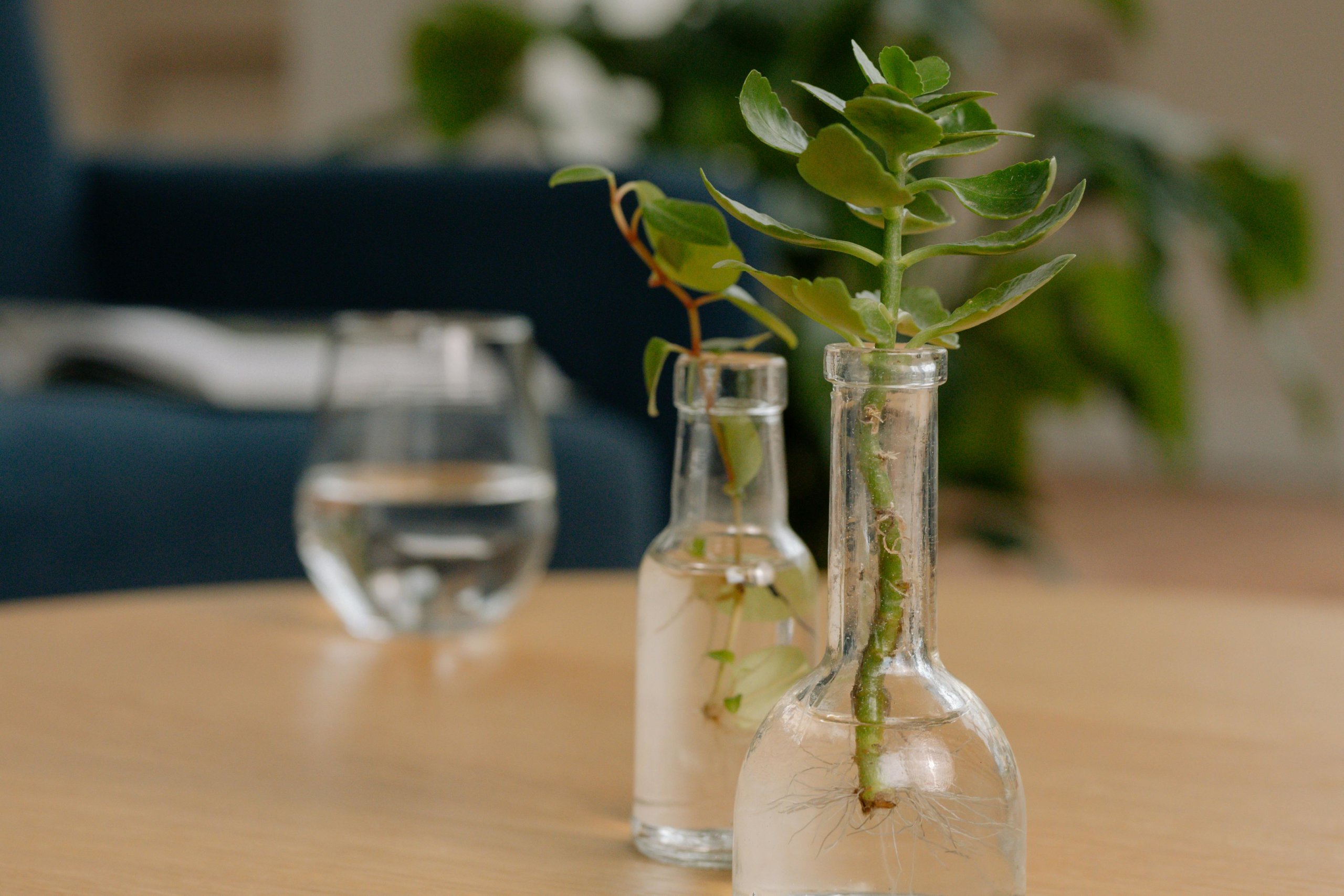Propagating Succulents in Water
You can grow new succulent plants by using water propagation, a method where you root cuttings in water instead of soil. This simple gardening technique helps you expand your succulent collection using healthy stems or leaves. Many gardeners like water propagation because you can easily see roots forming before moving the new plants to soil.
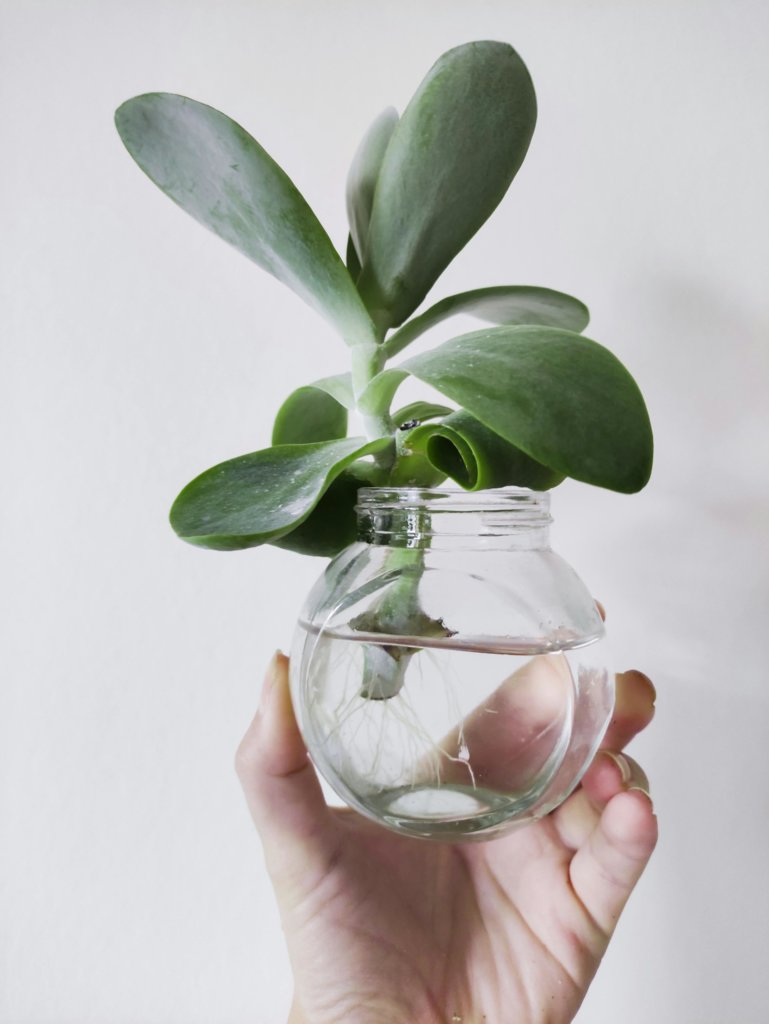
Water propagation works with many types of succulents, though it is different from traditional soil methods. You will start by taking a cutting from your existing plant, and then placing it in water with the right amount of light. Watching the roots grow can be satisfying and lets you keep an eye on your plant’s health.
This method is helpful for both beginners and experienced gardeners. With the right steps, you can have healthy new succulents thriving in water before planting them in their final spot.
Understanding Water Propagation for Succulents
Water propagation lets you root succulent cuttings using water instead of soil. This method surprises many, since most succulent care advice warns against leaving them wet. Still, water propagation can be successful with the right approach, especially for certain succulent species.
Key Differences: Water vs. Soil Propagation
Soil propagation is the usual method for succulents, where cuttings are placed in succulent soil mixed with perlite and coarse sand for drainage. With water propagation, you place the cuttings in a container so just the cut end of the stem touches the water’s surface. The rest of the cutting stays dry.
Soil methods can lead to increased fungus and soil-borne pathogens if not managed properly, but effective management practices can also reduce these risks. In water, roots are exposed but can form quickly if stems are not swamped. You can easily see new roots develop, which helps with monitoring progress.
Benefits and Challenges
Benefits of water propagation:
- Lets you watch roots grow, so you know when they’re ready for planting.
- Can encourage quicker root growth for some succulents when compared to dry soil.
- Reduces the risk of soil fungus in the early stages.
Challenges:
- Risk of root rot, especially if too much of the cutting is underwater.
- Some species do not root well in water and may wilt or collapse.
- Once roots form, plants must adjust to soil, which can stress new roots.
Keep the water clean and change it when it appears cloudy or discolored, typically every few days to once a week. Avoid letting the leaves or most of the stem touch the water. Use containers that support the cutting upright while minimizing submerged portions.
Best Species for Water Propagation
Not every succulent does well with water propagation. Some types adapt better to water and root faster. Good species to try include:
- Echeveria
- Graptoveria
- Sedum
- Jade plant (Crassula ovata)
- Aeonium
Most aloe varieties and some thick-stemmed succulents may not thrive and could rot instead. Carefully research each species before starting. Avoid water propagation with most cacti, as their stems are more likely to develop rot. Test with healthy cuttings and watch for any early signs of decay.
Step-by-Step Guide to Propagating Succulents in Water
Propagating succulents in water is a straightforward way to grow new plants from cuttings. By choosing healthy cuttings, letting them callous, picking the right containers and water, and watching root growth, you give your cuttings a good chance of success.
Selecting Healthy Cuttings
Choose a strong, healthy plant to take your cuttings from. Look for thick, firm leaves or stems that are free of disease, mushy spots, or pests. The best time to take cuttings is during the plant’s active growing season.
Use clean, sharp scissors or a knife. Cut a 2- to 4-inch section from a stem, or gently twist off a whole leaf if you are propagating from leaves. For offsets or plantlets, remove them with roots attached if possible. Healthy cuttings will root faster and are less likely to rot.
Take special care to keep the base of the leaf or stem whole and undamaged. Any wounded or torn surfaces make it harder for the cutting to grow new roots.
Preparing and Callousing the Cuttings
After cutting, set the leaf or stem cutting aside in a dry place out of direct sunlight. This waiting period lets the cut area dry and form a callus. Callousing helps protect against bacteria and reduces the risk of root rot when the cutting is placed in water.
The callous should feel dry and slightly rough, not sticky or wet. This usually takes a few days to several weeks, depending on air humidity and thickness of the cutting. Do not put the cutting in water before it has calloused or it might rot.
Once the cut end is well calloused, it is ready to start growing roots in water. Patience here helps the plant stay healthy.
Choosing Containers and Water Quality
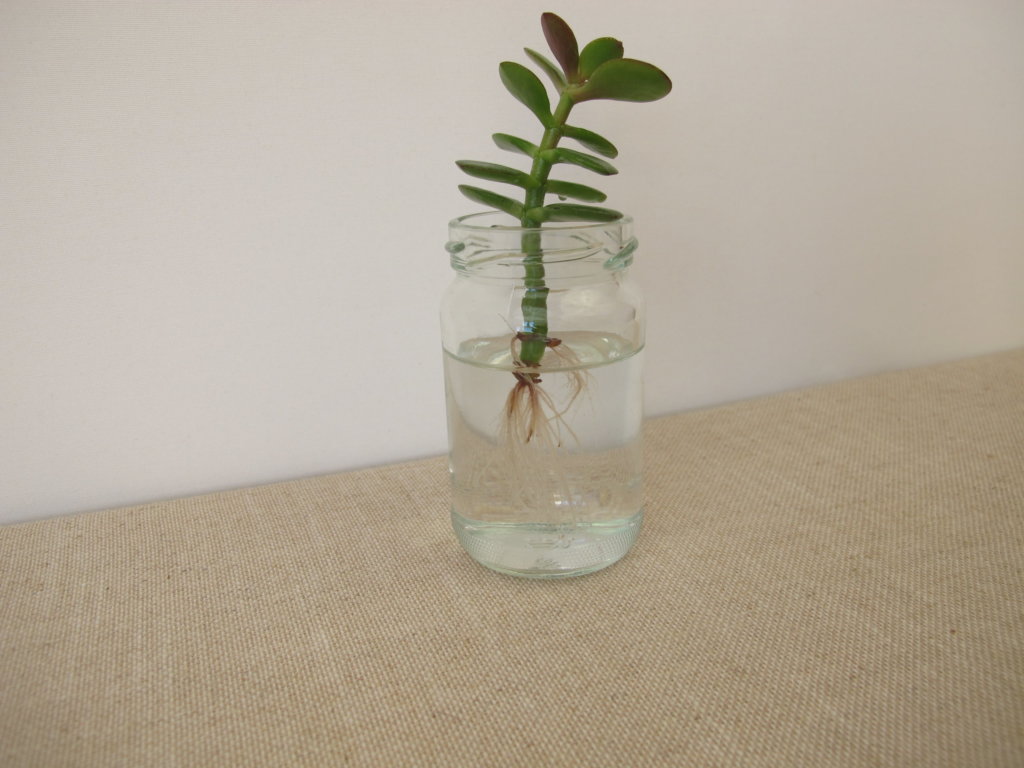
Use clear containers such as mason jars, cups, or a shallow tray. Clear sides make it easy to see new water roots forming. Place the calloused end just above, or barely touching, the water. You can use mesh, plastic wrap with holes, or a narrow-necked jar to keep the cutting from falling in.
Water quality is important. Use distilled water or let tap water sit out for at least a day to evaporate chlorine. Avoid using softened water since extra salt can harm succulents. Change the water every few days to keep it fresh and reduce the risk of bacteria.
Keep the container in a spot with bright, indirect light. Avoid direct sunlight, which can heat the water and stress the new roots.
Monitoring Root Growth and Health
Check your succulent cuttings every few days. Watch for signs of root development, white or pale roots should appear in 2 to 6 weeks. Healthy water roots will be firm and straight.
Make sure the water is always clean. Change it if it looks cloudy or if algae forms. If you notice any mushy, black, or rotten spots on the stem, remove the cutting, trim the affected area, and let it callous again.
A good root system should have several roots that are at least an inch long before you move the plant to soil. There is no set watering schedule, but keeping a close eye on the water and the health of the roots is crucial for success.
Caring for Water-Propagated Succulent Cuttings
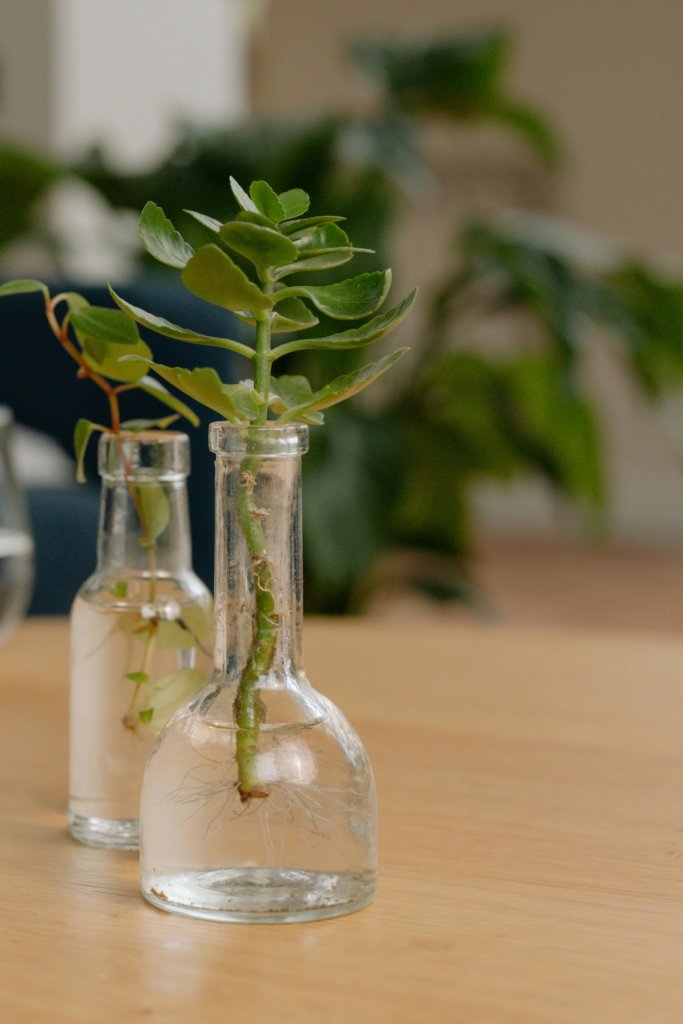
When propagating succulents in water, careful attention to lighting, transferring to soil, and ongoing maintenance is needed for healthy growth. The right light, timing, and proactive care all play a role in keeping your new rosettes thriving as houseplants.
Lighting and Environmental Needs
Succulent cuttings need bright, indirect sunlight after being placed in water. Too much direct sunlight can cause leaves to burn, especially when roots are just starting to grow. South- or east-facing windows are ideal spots, but sheer curtains work well to diffuse strong sunlight.
Room temperature between 65–75°F (18–24°C) is best for root development. Avoid cold drafts or extreme heat. Good air circulation helps prevent fungus, mold, and other issues around the water container.
If natural light is limited, a grow light set to about 12 hours a day can keep cuttings healthy. Place the container where pets and children won’t tip it over. Space the cuttings apart so each one gets enough light and air.
Transferring to Soil and Potting Tips
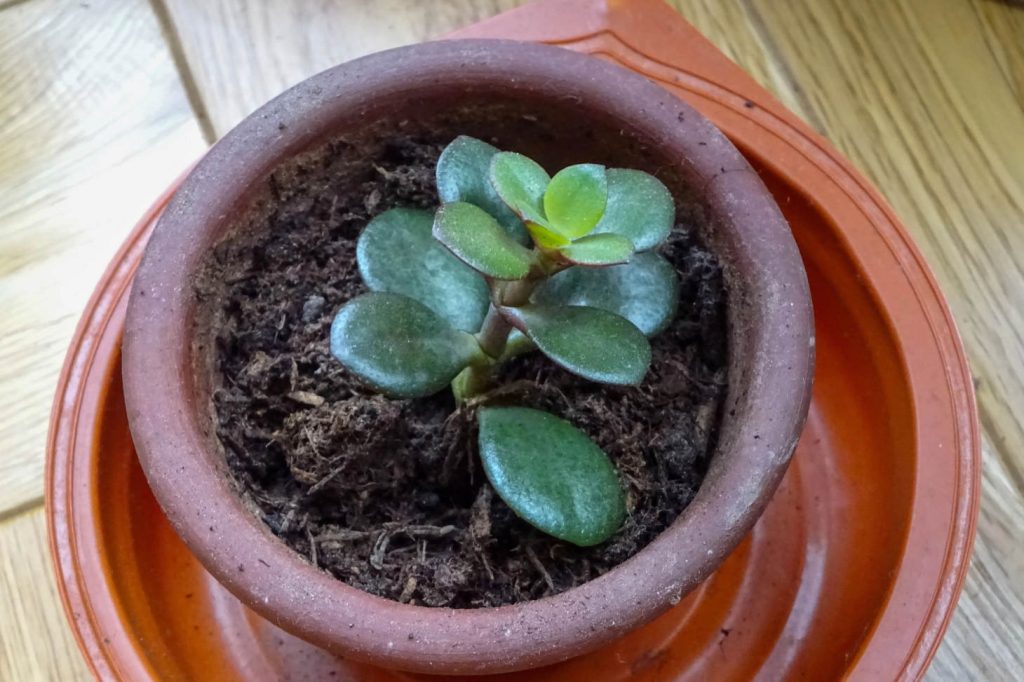
When roots are at least 1–2 inches long and look white or pale, it’s time to transplant your succulent into soil. Use a tray to make the process easier and to avoid damaging delicate roots. Choose a pot with drainage holes to prevent excess water from sitting at the bottom.
Use a succulent soil blend mixed with perlite and coarse sand. This ensures fast drainage, which is important for avoiding root rot. Hold the cutting gently and place it in the soil, making sure roots are spread out, not crowded.
Water lightly the first week using a careful watering schedule. The soil should be slightly damp, not soaked. Slowly let the soil dry out between waterings in the weeks after transplanting. Place the pot in indirect sunlight until the plant adjusts.

